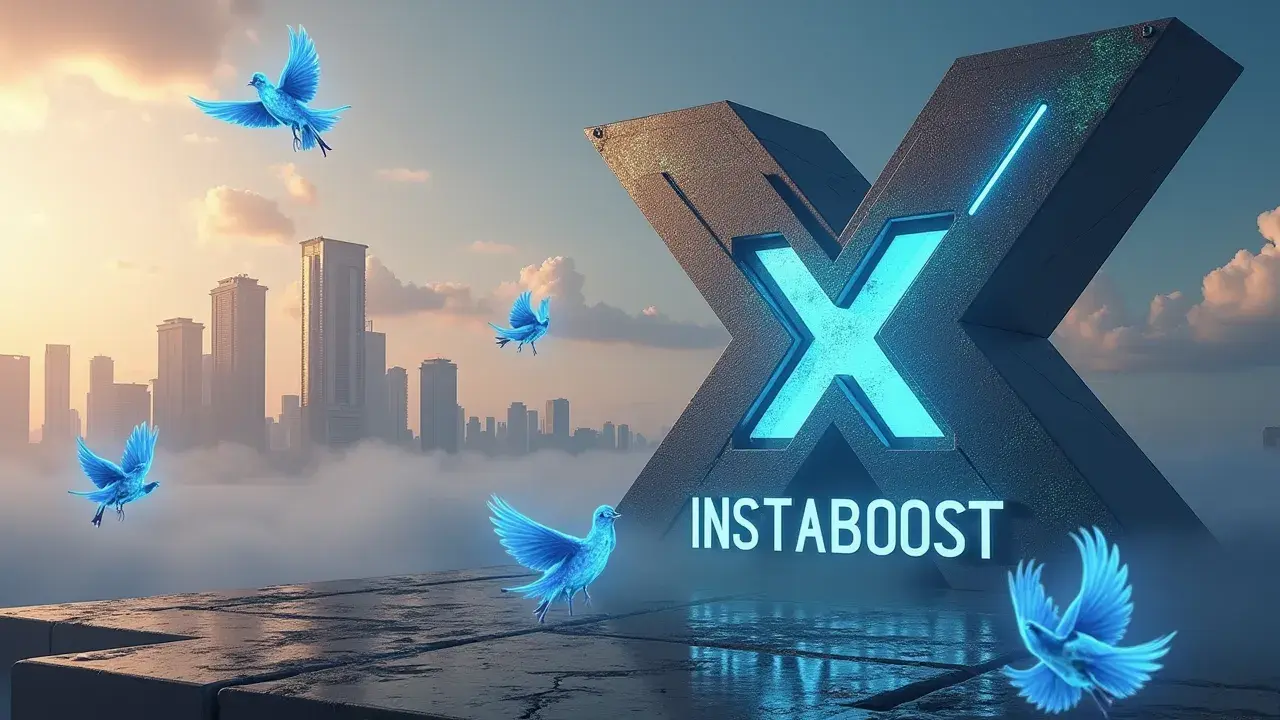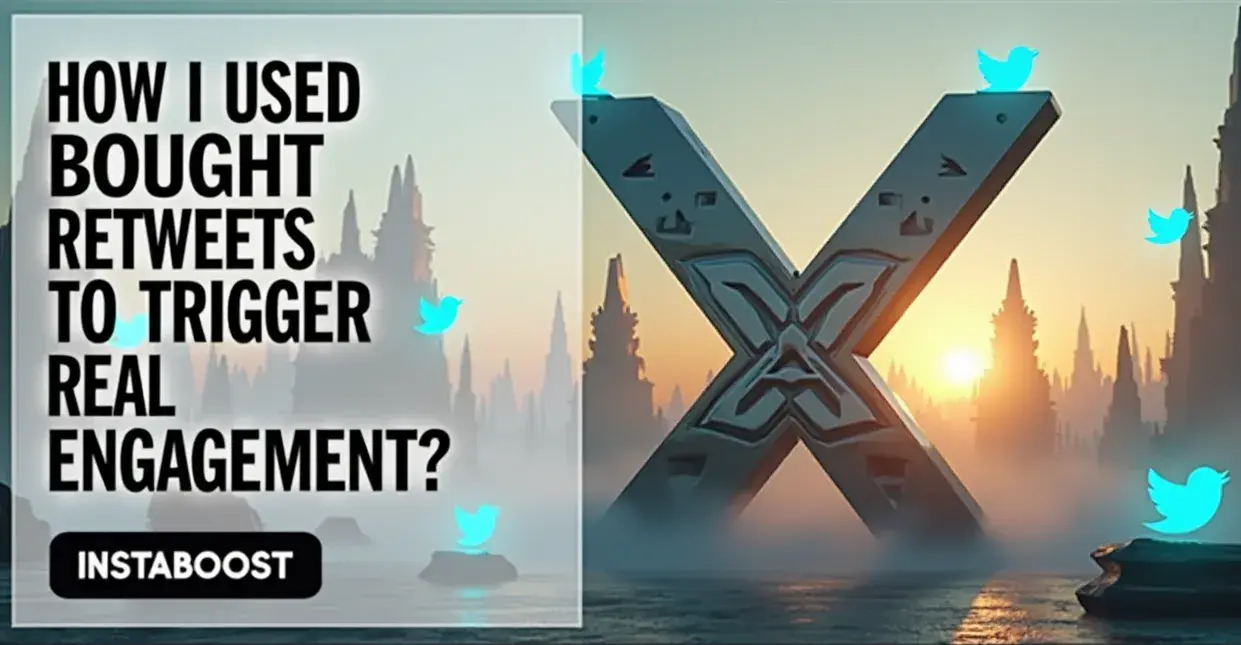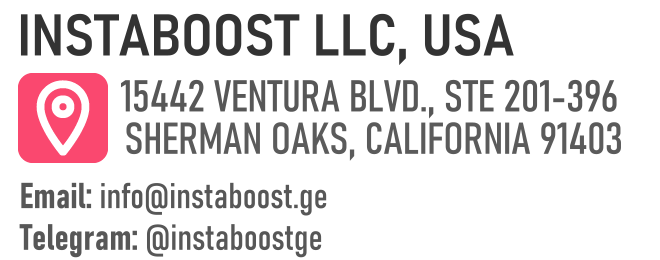How Were Bought Retweets Used To Trigger Real Engagement?
Bought retweets can prime early visibility when content already sparks quick curiosity. A small bump in the first hour helps posts surface, leading to authentic replies if the topic aligns with an active day and watch time holds. Momentum compounds when posting consistently and monitoring how the audience responds. The smart path is to use a modest lift only when the content-message fit is strong and performance signals are steady.
The Point of Paid Signals Is Not Fame – it’s Frictionless Momentum
I didn’t buy retweets to look popular; I used them to push past the early drag that hides solid threads before they can breathe. That distinction matters. Twitter cares about early velocity: if a post gets real engagement in the first few minutes, it’s more likely to show up in For You and keyword searches.
So I treated paid retweets like a starter pistol, not a trophy. I set a few guardrails. The thread had to be worth saving – clear insight, one takeaway people could use, and a hook that made them feel smart sharing it. Timing had to line up with what people were already talking about – like posting a product teardown when a related feature update was circulating.
And the paid retweets had to look like normal distribution: a small bump from accounts that wouldn’t trigger authenticity alarms, folded under my usual audience. That lowered risk while priming the right signals: dwell time, replies, profile clicks that led to follows or DMs. The outcome wasn’t fake reach; it was a small nudge that matched how the system works, helping the right people see it sooner and engage more. This is what gets lost when people call paid signals empty calories. Retweets don’t create trust; they buy you time and surface area for your ideas to earn it. Used sparingly, with a strong thread and a clear call to conversation, they can spark actual engagement – comments, quotes, follows – from the people you care about reaching.
In the next pages, I’ll lay out the decision tree, the timing windows, and the metrics that mattered, so a handful of bought retweets becomes a controllable variable in your Twitter strategy, not a brand risk. It’s a practical form of amplification. Measurable, repeatable, and when you’re careful about it, cleaner than most people think and Twitter followers for growth isn’t the point so much as predictable momentum.

Why You Should Trust a Tactician, Not a Tourist
The metric that mattered wasn’t on the dashboard. I wasn’t chasing retweet counts; I watched lift – how fast impressions turned into replies, profile clicks, and follows in the first 10 minutes. That window tells you if a thread will get secondary reach in For You. I ran this across 14 threads, alternating no boost and a small batch of purchased retweets. Same topics, same posting times, same hooks. The difference showed up in the slope, not the totals: paid retweets nudged the early engagement from flat to slowly rising, which kept unlocking quote tweets from people who didn’t follow me.
That’s the signal I was after. I vetted the vendors. I paid a bit more for accounts that looked normal and posted about the same topics, avoided bulk farms, and capped it at 10 – 20 retweets per thread. Think primer coat, not paint job. To keep the data clean, I watched two checks: reply depth from unique users and save/share counts. Bot networks don’t hold those.
If either dipped, I stopped boosting future posts. And I never boosted weak drafts. Threads had to clear a short checklist – clear premise, one or two real data points, one actionable takeaway – before I spent anything. That’s the part people skip. Bought retweets didn’t make me look big; they lowered launch friction so the thread could earn its keep. If you’re weighing this, search “Twitter early velocity benchmark” and compare your first-10-minute profile clicks per impression, and remember that if you’re tempted to get more followers on twitter as a shortcut, it won’t move that rate by itself. If that rate doesn’t move, it’s not the platform – it’s the thread.
Design the Flex: Timing, Targeting, and Tripwires
A strategy that can’t adapt isn’t really strategy. To make bought retweets lead to real engagement, I use a living playbook with three parts: timing, targeting, and tripwires. For timing, I add a small boost in the first 3 to 7 minutes after posting, when Twitter’s For You feed pays the most attention to early momentum. If a thread hasn’t hit at least 1% profile clicks or replies by minute 10, I turn off the spend. No point pushing a post that isn’t landing. For targeting, I skip big, generic accounts.
I look for smaller, relevant profiles whose followers overlap with the people I want to reach. Their retweets build relevance instead of vanity numbers. For tripwires, I set rules before I spend: if replies drift off-topic, or the growth curve levels off after the first bump, I stop boosting and add clarifying comments to protect the signals around the thread. The goal isn’t a higher retweet count; it’s getting the thread into discovery so the right readers can find it and decide, and that’s also why I ignore vanity moves like chasing follower counts or trying to purchase likes for X instead of tuning for relevance.
Across 14 threads, the flexible routine mattered more than the budget. When the thread had a clear hook and a reason to save it, a small dose of paid retweets was enough to unlock secondary reach; when it didn’t, the guardrails kept me from training the algorithm on the wrong audience. In practice, I post at a steady time, open with a question that invites specific answers, add a small, relevant boost, and watch the first 10 minutes closely. If the signal shows up – replies that quote ideas, not emojis – I add context and keep the conversation moving. If it doesn’t, I pivot and move on, and that’s how bought retweets stay a tool instead of a gimmick, and how a steady cadence with selective boosts turns into actual engagement on Twitter.
Stop Calling It Cheating – Call It Calibration
You call it strategy; I call it guess and stress. Here’s how I think about the hand-wringing over buying retweets: the platform already rewards momentum, not virtue. If a small paid nudge tells me by minute ten whether a post is pulling real replies, that isn’t faking it – it’s tightening the feedback loop. The “paid signals are empty calories” line only applies if you’re chasing vanity metrics. I’m not. I watch lift: replies, profile clicks, and saves per impression, and I cut spend as soon as those ratios slide.
That’s calibration. There’s also the counterfactual everyone skips. Without a spark, a solid thread can sit unseen while lighter takes ride early velocity. A micro-boost surfaces the test sooner. If it doesn’t land, tripwires shut it down.
And no, this doesn’t “poison the algorithm” when targeting is tight – the buy goes to accounts that overlap with the real audience, so downstream discovery still finds the right people. The outcome shows up in the numbers: more replies per thousand impressions, stronger follow-through, a better shot at For You. If that sounds like paid social heresy, fine – I think of it as a disciplined A/B warmup. In a feed where timing and context set the first domino, a small, bounded boost is a diagnostic tool, not a disguise. The point isn’t to look legitimate; it’s to earn legitimate signals faster, which is why I still keep a quiet bookmark to things like bulk views for tweets when I’m sketching the early pulse plan. That’s how a retweet buy turns into real engagement – and why it stays in my Twitter growth toolkit, even if it makes people uncomfortable.
Close the Loop: Proof, Not Posturing
No big exit – I’m taking a different route. I treat bought retweets like test gear, then share what I find. I tag every boosted post with a private UTM and a “B-flag” in my tracker so I can separate real engagement from paid noise.
Then I run a seven-day follow-through: replies-to-retweets ratio, saves per 1,000 impressions, profile clicks, and how many people actually read the linked article. Somewhere along the way I learned that buying a handful isn’t a win so much as a probe, the same way folks talk about a viral retweet pack without pretending it guarantees anything. If those don’t beat my organic median by 15%, I drop the angle and that audience cohort. I only keep what the data holds up: I pull phrases from reply clusters that spun off sub-threads, rebuild the hook, and post it again in the same time window with zero spend to see if it stands on its own.
That’s how paid retweets lead to real engagement instead of puffing up vanity numbers. It lines up with the “Design the Flex” playbook: small spark in minutes one to seven, tripwires by minute ten, then a hard audit a week later. I call it calibration, not cheating, because it makes the outcomes repeatable: topics that pass the zero-spend rerun go into a monthly pillar thread; the rest get archived with notes. If you want something simple to follow: paid signals should reduce uncertainty, not prolong wishful thinking. The result is a timeline that earns real conversation without nicking your brand, and a process you can hand to a teammate without feeling like you’re handing over a stunt.
Why This Isn’t Cheating – It’s Choosing the Right Instrument
Call it what you want – bought retweets, paid nudges, calibration – but the point is to trade guesses for signal. If the platform rewards momentum, the honest move isn’t to posture; it’s to run cleaner tests. When I buy a small burst of retweets, I’m not faking popularity; I’m trying to get an early read. By minute ten, I can see whether the post is pulling saves, replies, and second-degree quote RTs – the stuff that actually compounds. The key is separation, not denial: I tag every boosted tweet with a UTM and a B-flag, so my dashboard shows the paid lift on its own track. That lets me see whether the organic curve steepens after the initial push or stalls the moment the spend stops.
If it stalls, I cut it. If it rises, I rewrite the hook, tighten the first sentence, and schedule a few variations while the conversation is still active. That’s how you turn bought retweets into real engagement. Timing and audience fit start to show up here too. A small test on one thread at 8:12 a.m. might tell me the same idea at 1:47 p.m. underperforms with the same nudge – useful, because it says ship to the moment, not the calendar. I treat boosts like instrumentation, not theater.
The growth-hacking crowd uses them as a disguise; I use them as a lab light. The difference is that I share the readouts, not the costume. If you care about Twitter growth and search for terms like social proof strategy, this gives you a setup you can run without trashing your brand, and purchase real Twitter followers isn’t a directive so much as a reminder of the kinds of inputs people lump together when they’re really talking about testing.















